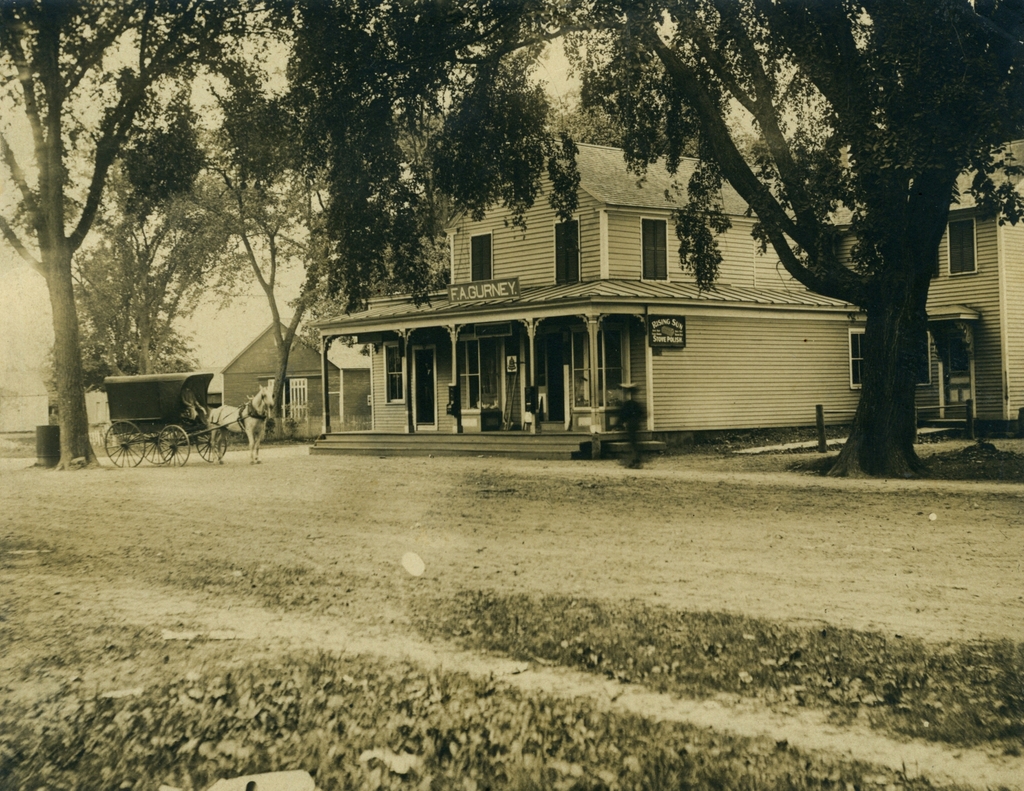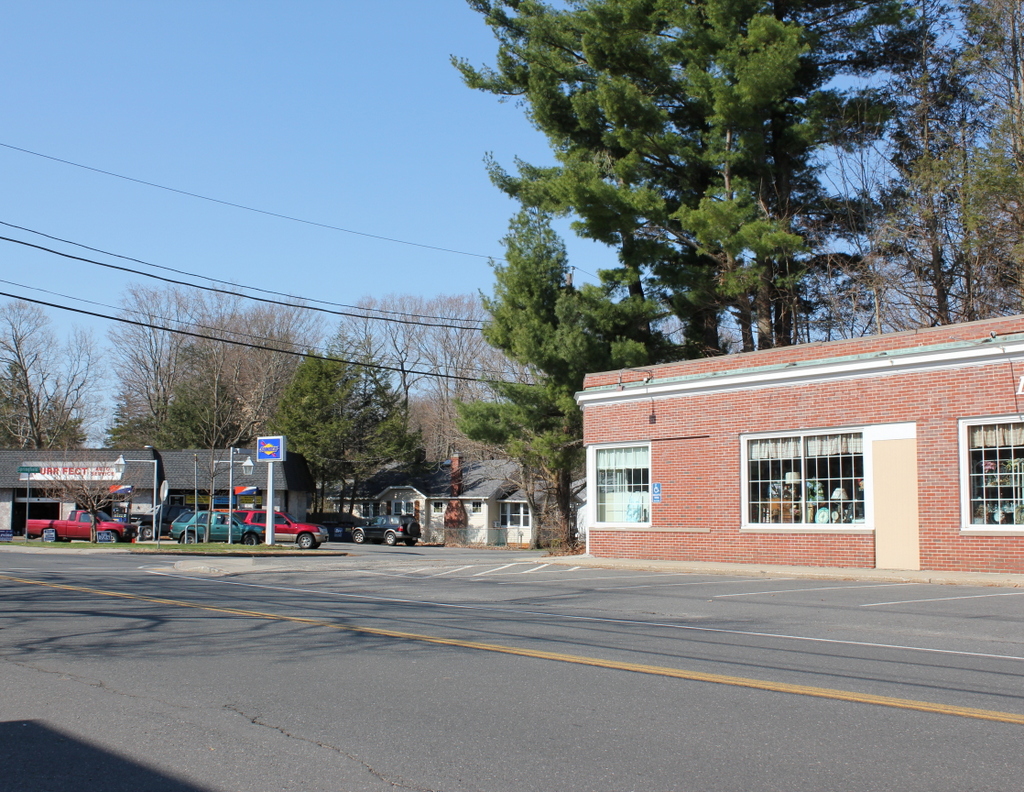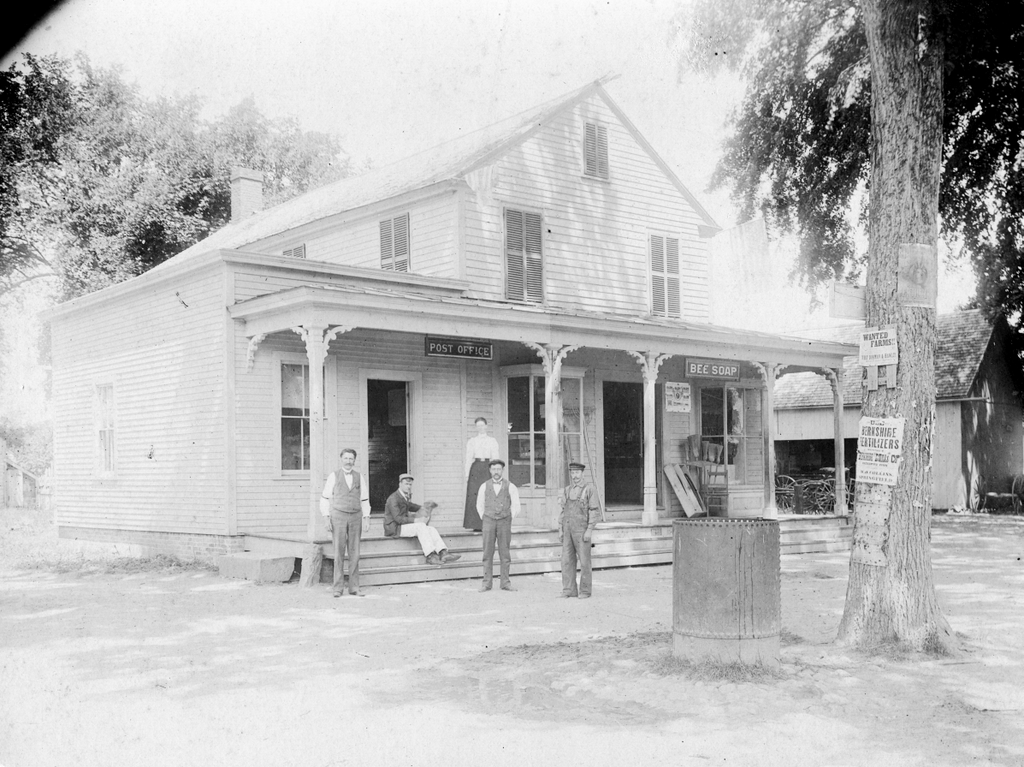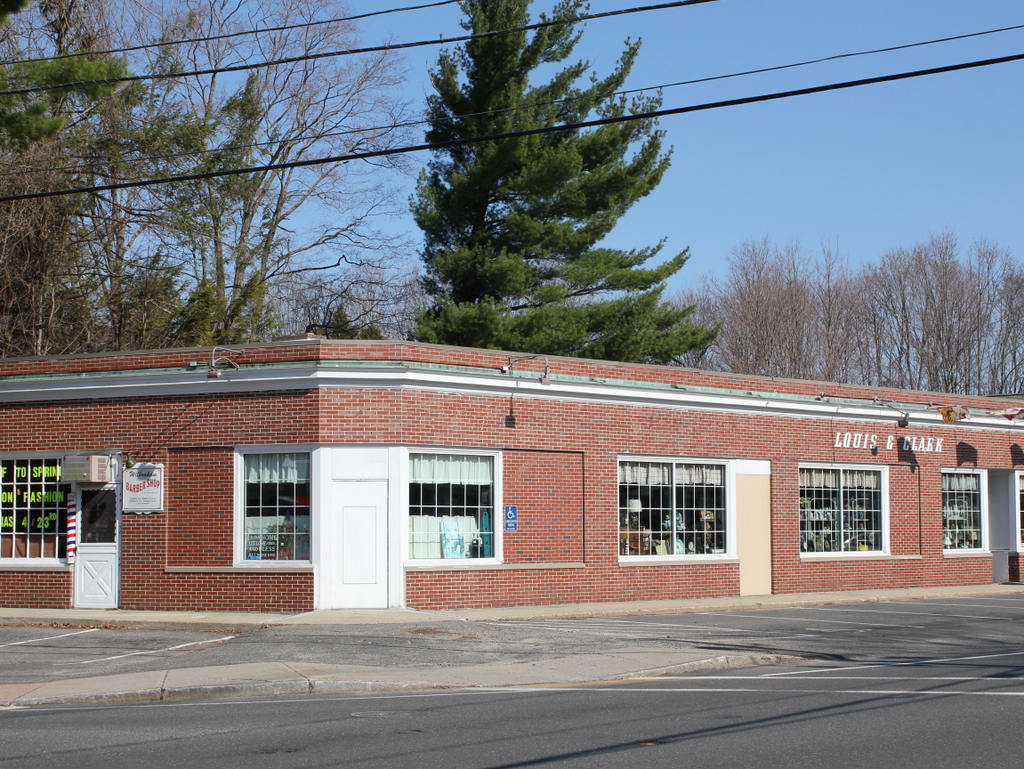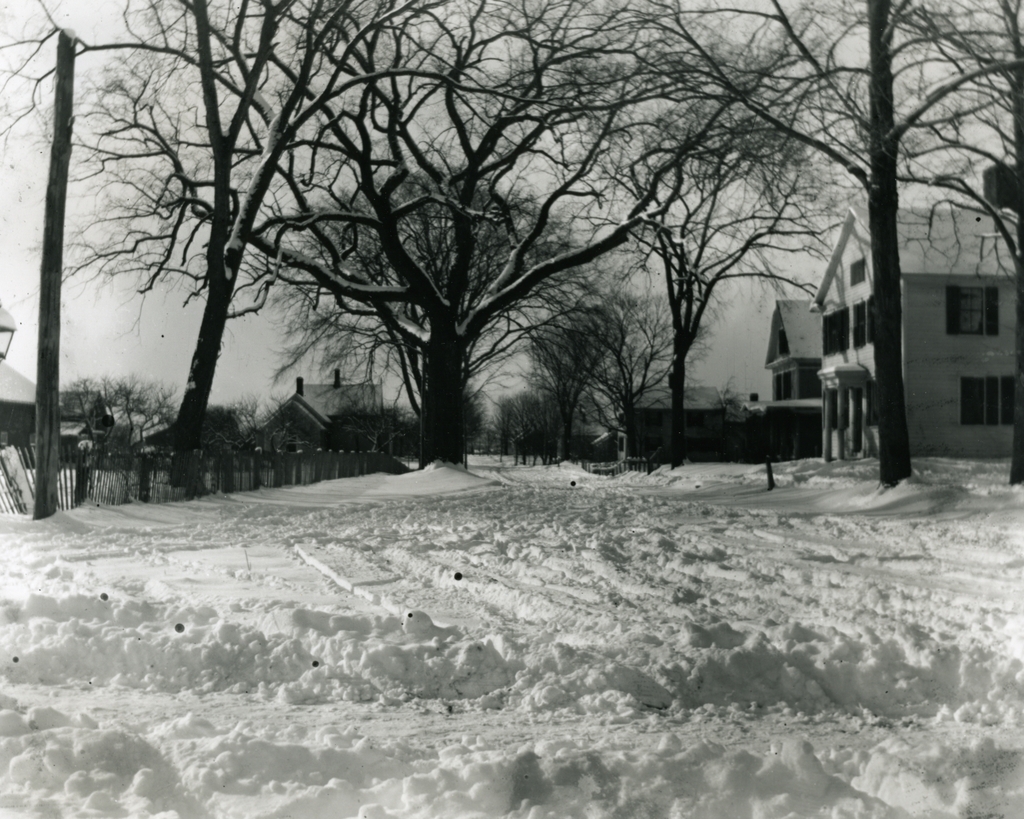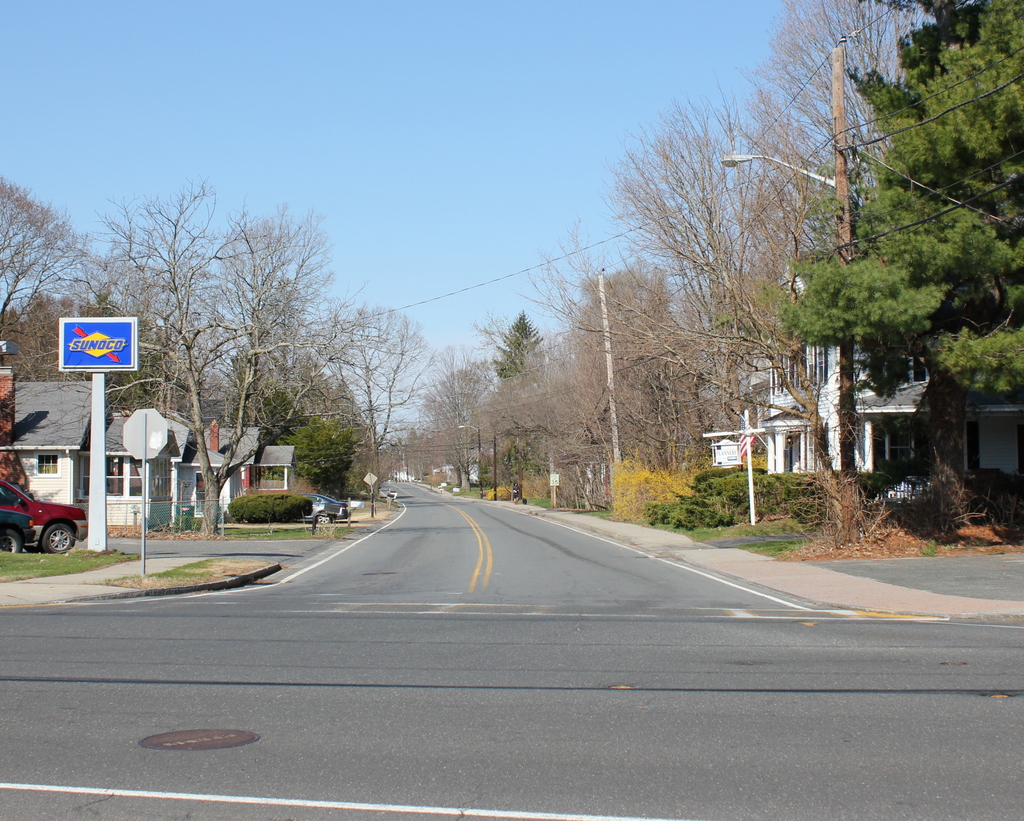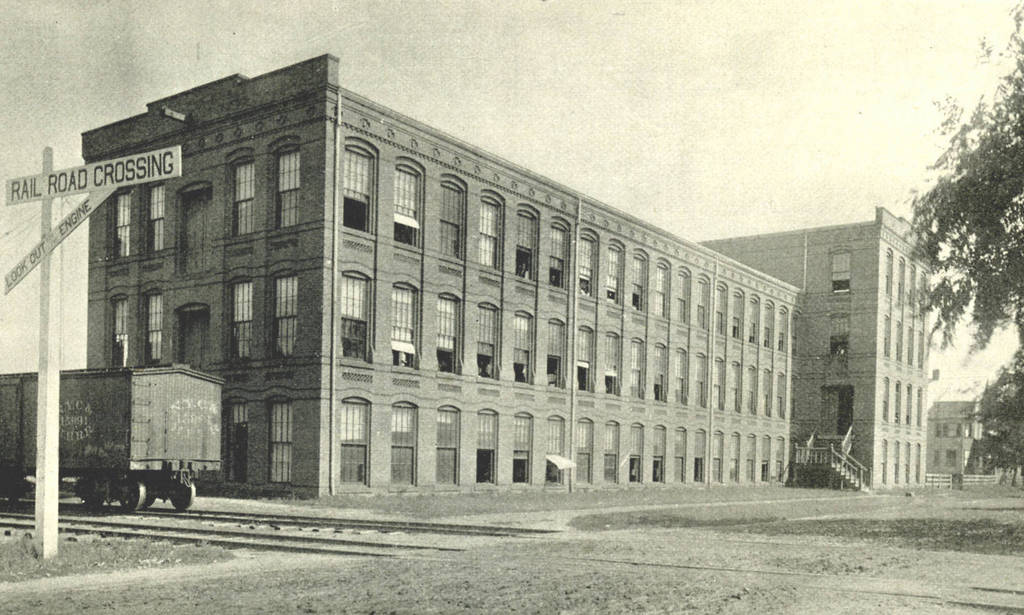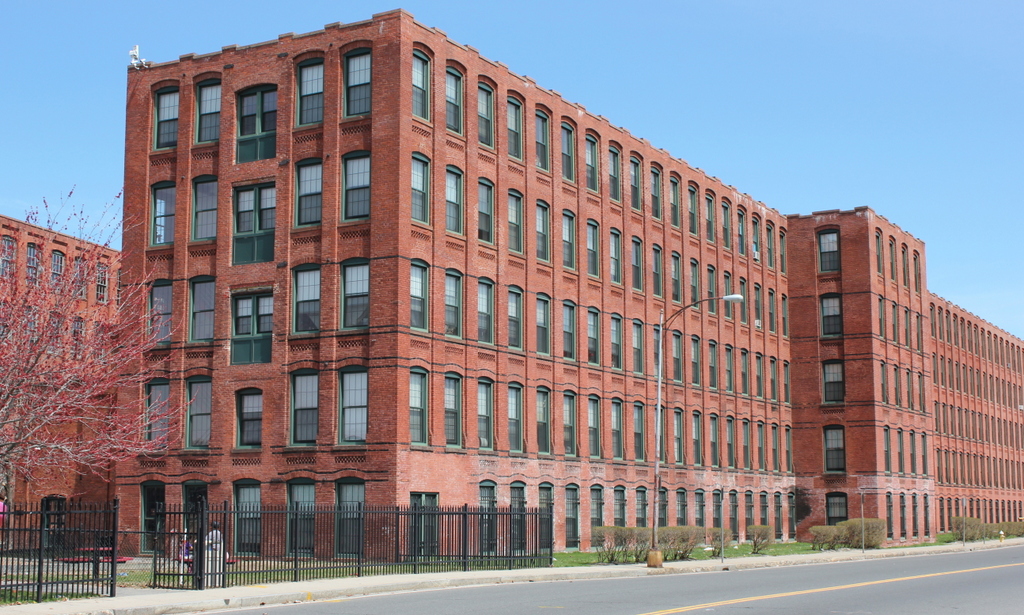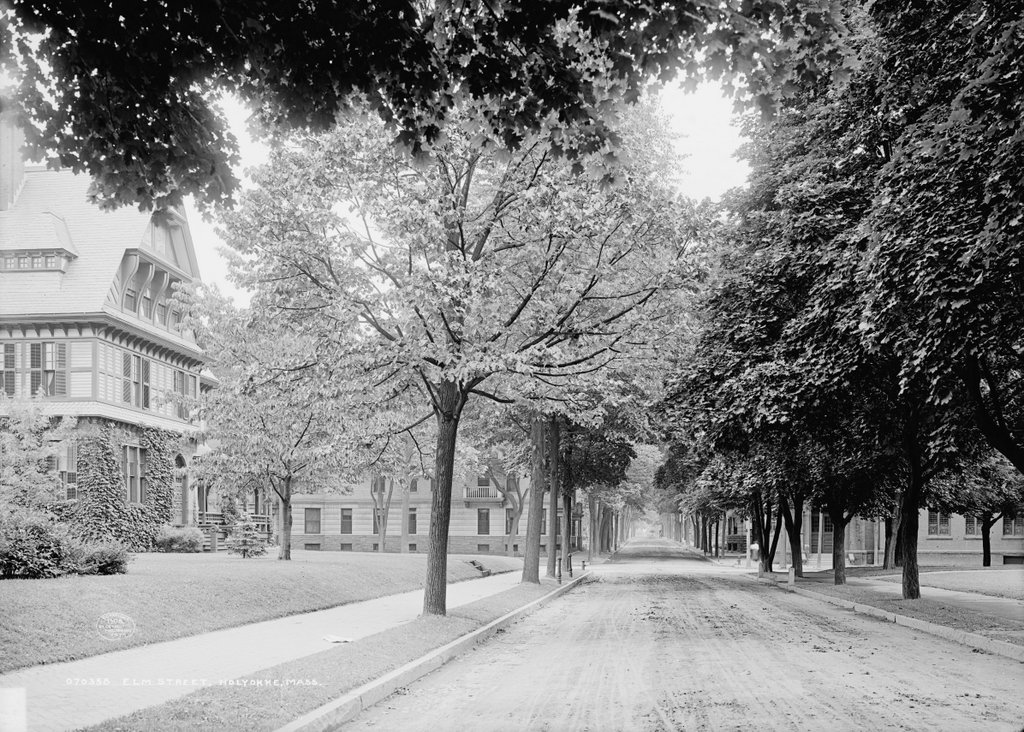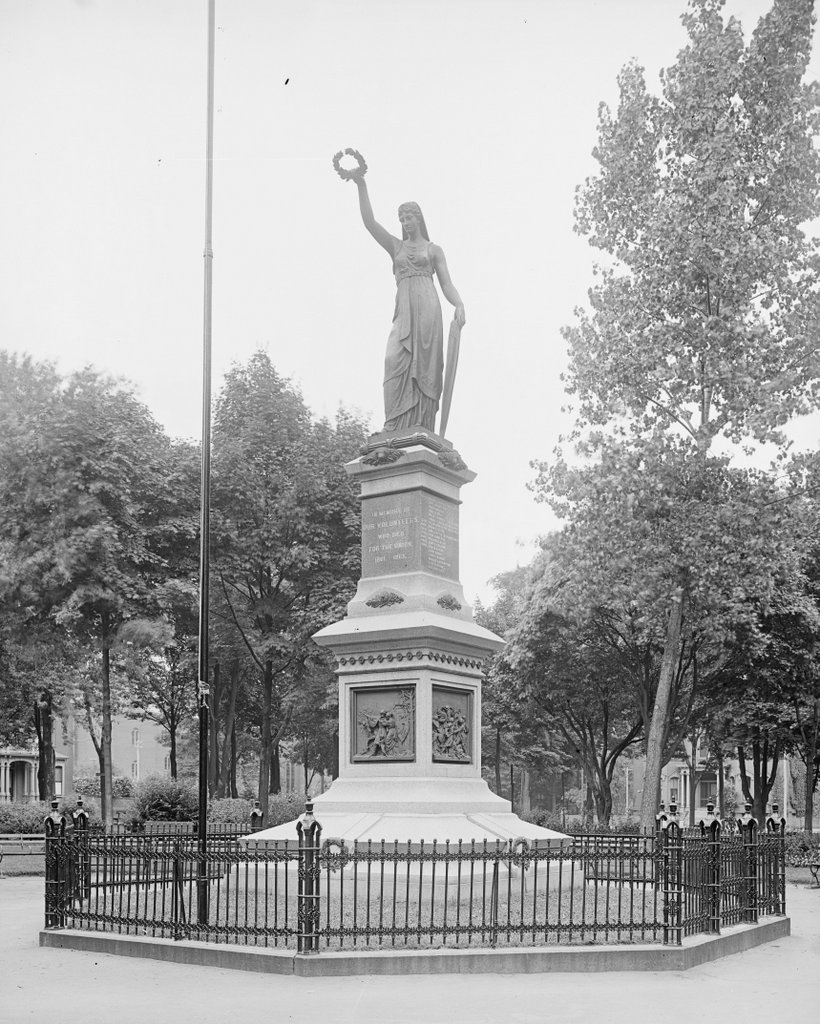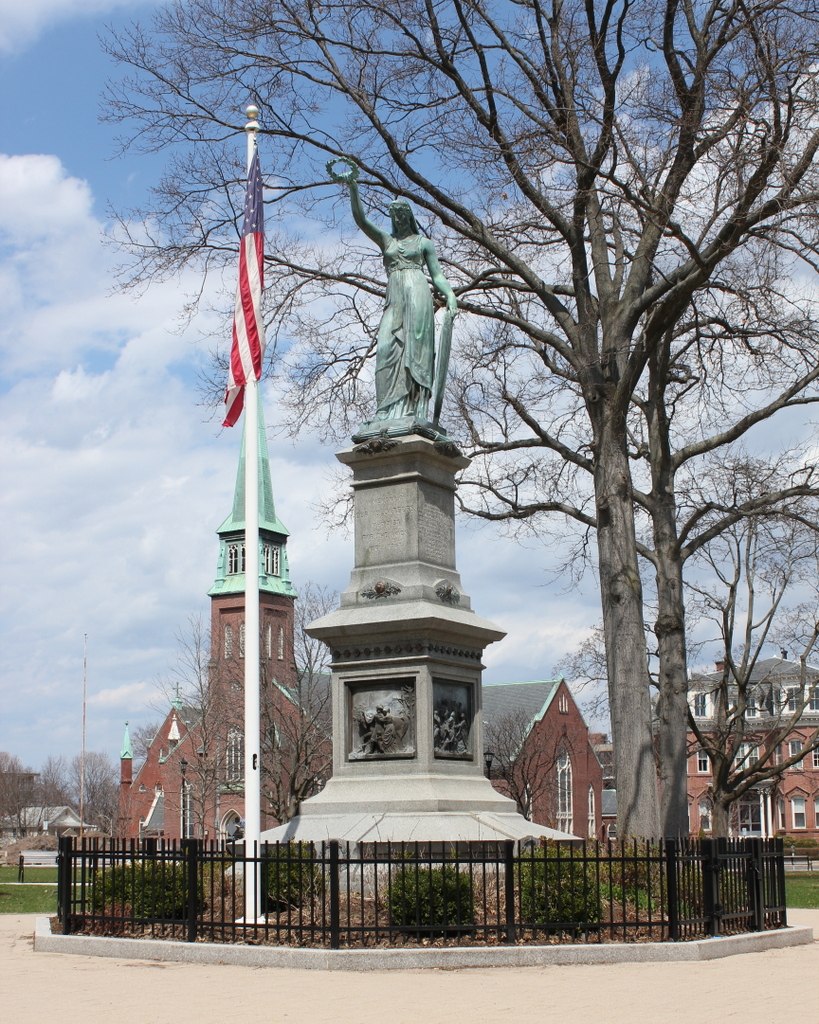Another view of Gurney’s Store, at the corner of Main and Springfield Streets in Wilbraham, around 1904. Image courtesy of the Wilbraham Public Library.
The scene in 2015:
This scene shows the general store at the corner of Springfield and Main Streets as it appeared when Frank A. Gurney ran the store. As mentioned in this post, the store was owned by several different people around the turn of the last century, with Gurney bring the one most commonly associated with the building. His delivery wagon can be seen in this post, and his primary business was selling goods to farmers in the area, although he probably also saw a fair amount of business from students at nearby Wesleyan Academy. Gurney was out of the building by 1913, and it was used as a post office and Masonic Lodge until it was demolished in 1957, and for many years afterward this was the site of the Louis & Clark drugstore.

